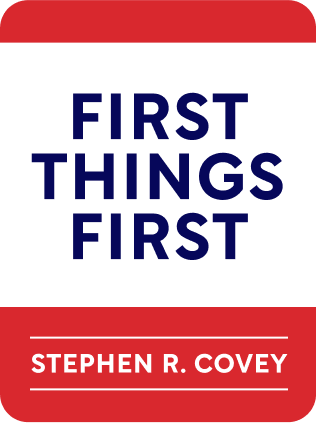

This article is an excerpt from the Shortform book guide to "First Things First" by Stephen R. Covey. Shortform has the world's best summaries and analyses of books you should be reading.
Like this article? Sign up for a free trial here .
What is employee empowerment? Do you want to know how to empower employees in your organization?
In his book First Things First, Stephen Covey discusses how to empower employees to take initiative and make their own decisions. His empowerment approach centers on three key practices.
Read on to learn how to empower employees to take the initiative and assume autonomy in their projects.
How to Empower Employees: Three Key Practices
In most organizations, employees aren’t empowered to make their own decisions and aren’t given the freedom to take initiative on their own projects. This is bad for the job satisfaction and professional growth of the individual and also bad for the company.
If you are the leader of an organization, there are three things you can do to empower employees to take initiative and make their own decisions:
- Create an empowering environment
- Seek feedback
- Engage in servant leadership
Let’s explore each one in detail.
1. Create an Empowering Environment
There are four conditions of an empowering environment: trustworthiness, self-motivated team members, systems aligned with goals, and accountability.
Allowing individuals to tap into these endowments makes them feel empowered, improving the company’s culture and the quality of its output. Each of the four conditions falls into your Circle of Influence, to varying degrees.
Condition #1: Trustworthiness
Members of a group need to be trustworthy for everyone to feel empowered. A person’s trustworthiness is created by combining her competence and character. A person’s character includes the ability to face problems in a direct but compassionate way, the ability to see a number of different alternative solutions to a problem, and the ability to live an integrated life in which public, family, and private lives are aligned with principles.
A person’s competence includes not only job-specific knowledge and skills, but the ability to see the big picture, alternate between different viewpoints, and work well with others.
Both are equally important — a person may be honest and kind, but if she’s not competent, you can’t trust her; conversely, a person may be skilled and knowledgeable, but if she’s not honest, you also can’t trust her.
Cultivating your own character and competence is one of the best ways you can spend your time. Do this by asking yourself questions as you set your weekly goals:
- What skills or knowledge do I need to gain to be better at my job? What skills or knowledge do I need to gain to work well with others?
- Am I dealing with issues head-on?
- Am I interacting with others in a compassionate way?
- Am I continually on the lookout for a variety of solutions?
Condition #2: Self-Motivated Team Members
To feel empowered, you need to feel self-motivated. You’re responsible for your own work in a high-trust culture. The Stewardship Agreement keeps everyone accountable without the need for hovering supervisors to tell you what to do and to check up on your work.
Whether you’re the leader of the group or not, you can help others feel empowered by reinforcing the agreement and holding members accountable for the desired results.
If you are leader, ask yourself: Do I let others use their own methods rather than forcing my own on them? Do I give people enough space? Do I constantly check-in?
If you’re a group member, ask yourself: Do I wait to be told to do something, even when I already know what needs to be done? Do I take initiative and come up with my own systems and ideas?
Condition #3: Systems Aligned with Goals
When systems don’t align with the purpose they’re supposed to support, no one feels empowered. For example, if you want your kids to take more responsibility around the house (the goal) but you’re constantly telling them what household chores to do and how to do them (the system), your system isn’t aligned with the family goal. If encouraging cooperation is your organization’s goal but the system rewards competition, again, your system isn’t aligned with your goal.
If you’re not in a position to change the systems at work, take charge of the systems in your personal life. You can also help create them on committees at work or in community service projects. Find ways to align your systems with your goals wherever possible. Ask yourself:
- Which systems are keeping me from reaching my goals?
- Which systems can I improve?
Condition #4: Accountability
Accountability requires checking your current status against the stewardship agreement. The stewardship agreement is the primary tool of accountability, so make sure that it includes the specific criteria for determining responsibilities and assessing results.
Requesting feedback from others also increases your accountability, although praise and criticism from others is not the primary way you should determine if you’re doing your job well or not. (More on feedback, below.) As you continually check your decisions, actions, and results against the agreement, you’ll develop discernment, and your conscience will be able to tell you how you’re doing.
2. Seek Feedback
The second thing you can do to empower yourself and others is to seek out feedback. This is one of the most powerful things you can do to build both your character and competency. It’s also one of the hardest. It requires humility. This humility allows you to see your blind spots, let the perspectives of others change your own, and understand how others view you.
Feedback should always focus on a person’s performance rather than her character. Feedback should be specific and based on the criteria established in the stewardship agreement. Furthermore, feedback should be “360 degree feedback,” coming from every stakeholder, including employees, investors, customers, suppliers, and the community.
Once you get feedback, review it carefully. Then, return to the person who gave it to you and thank them. Ask them to help you create an action plan to address any pieces of constructive feedback.
One good way to ask for feedback is the “continue/stop/start” method:
- Continue: What am I doing as your parent that you’d like me to continue doing?
- Stop: What am I doing that you’d like me to stop doing in the future?
- Start: What am I not doing currently that you’d like me to start doing?
You can seek feedback at work or at home. For instance, as a CEO, you might find that your employees want you to spend less time managing and working on projects and more time clarifying the vision for the company. As a parent, you can seek feedback from your children — they might surprise you with their maturity and thoughtfulness.
3. Engage in “Servant Leadership”
“Servant leadership” is the idea that you lead best by serving your subordinates. This only works if the four conditions for empowerment, detailed in “Creating Empowering Environments,” are in place. You can’t let go of control if doing so leads to chaos. But once you’ve created a high-trust environment, you should spend your time engaging in Quadrant II activities like creating a shared vision, building relationships with your staff, getting feedback, and mentoring others. Your goal is to help others develop the skills and knowledge to take initiative and work independently. In the long run, this is much more effective and much better for the company than telling employees what to do or doing things for them.
For many leaders, giving up control is the hardest part of empowering others.
Instead of telling employees what to do, ask them what you can do to help them achieve the desired results. Instead of giving instructions, make suggestions. Ask, “Have you considered X?” Don’t solve problems that employees can solve themselves — when someone has a problem, ask, “What do you recommend?” rather than giving a solution.
If you’re required to give performance reviews, you can give the review form to the employee ahead of time and have her fill it out herself. Then, you can review the form together and discuss your own performance as a manager.
If you’re a parent, consider taking your child to her next parent-teacher conference, allowing her to talk about the assignments and goals and respond to her teacher’s feedback. Ask your child what you and the teacher can do to help her reach her goals. This empowers her, reminding her that her education is her responsibility, not her teacher’s or parent’s.
How to Empower Employees: Common Challenges
Creating an empowering environment isn’t easy. Here are a few of the most common questions:
My Boss Doesn’t Know What a Win-Win Stewardship Agreement Is. What Should I Do?
You can create a stewardship agreement with your boss without her knowing what it is. You can start with a meeting to clarify your responsibilities. Say, “I want to make sure we’re on the same page regarding my responsibilities and priorities. Would you mind checking this list and telling me if you’d like me to rearrange my priorities, or if you see my responsibilities differently?”
In the next meeting, ask to clarify the organization’s guidelines and policies. This is Step 2 of developing a win-win stewardship agreement. Tackle a step at each meeting. It might take months, but you can arrive at an informal but concrete agreement without ever using the words “stewardship agreement.” If your boss makes a request that doesn’t align with the agreement, politely refer back to the list of priorities she confirmed and ask her what changes she would like you to make to that list. This reminds her of your joint priorities and may result in her deciding that her unaligned request isn’t important after all.
My Boss Doesn’t Want to Empower Me. What Should I Do?
Sometimes, people just want to keep doing things the way they’ve always done them, and there’s little opportunity for you to change the system. Your boss may not be interested in giving you more responsibility and encouraging you to take initiative.
In some cases, if your Circle of Influence is small, it’s best to find a new job. But in general, you can almost always work on empowering yourself, building your skills and knowledge, and in doing so change the way others see you. The more competent you are, the more likely you are to be seen as someone who can handle more responsibility.
How to Empower Employees When They aren’t Interested ?
Meet employees where they are. If they don’t feel comfortable taking on more responsibility or taking initiative, don’t force them. But be clear about how much you value their talents and about your hope that they’ll eventually feel more comfortable with responsibility. While creating the stewardship agreement, establish expectations and specify how you’ll continue to give them opportunities to take initiative.
You can also ease employees into empowerment by asking them to help create the mission statement and declining to solve problems for them, instead, asking, “What do you recommend?”
How to Empower Employees When I Can’t Trust Them?
1. Examine the way you perceive the people you don’t trust. Ask yourself, “Do I believe this person can change?” If you’re approaching your colleagues or employees from a position of distrust, that’s coming through in your interactions. Assume that the people you work with aren’t trying to be incompetent or manipulative.
2. Support the people you don’t trust. Find ways to foster the development of colleagues or employees. Use the stewardship agreement to decide together which expectations are realistic and which resources and professional development opportunities could help improve performance. Also, help people access their “inner compasses” by asking them how well they feel they’re performing, based on the agreement.

———End of Preview———
Like what you just read? Read the rest of the world's best book summary and analysis of Stephen R. Covey's "First Things First" at Shortform .
Here's what you'll find in our full First Things First summary :
- How to work effectively, not just efficiently
- Why you need to think more about what you're spending time on than how much time you're spending
- The 6 steps to effectively schedule and prioritize important activities






